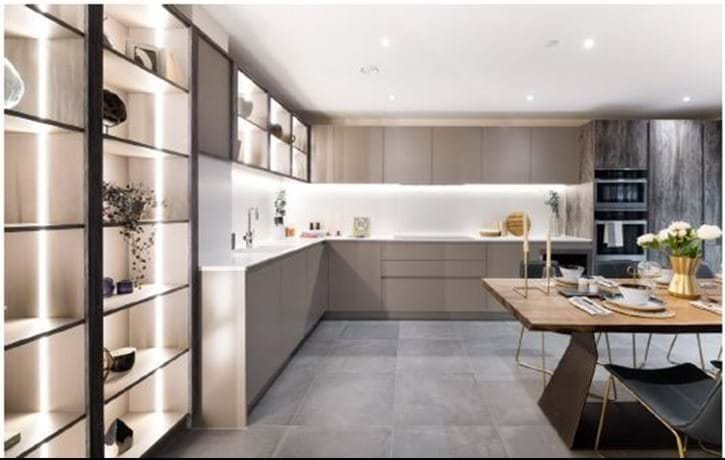There are multiple fundamental principles to Interior Design. Our friends at the award-winning Interior Design Consultancy, Suna give us some insight into how they apply some creative flair to create unique designs with personalities, that will transform any room in your home.
Charlotte Stevenson from Suna shares her tips on how their Interior Design team introduces style and flair to show homes and demonstrates how you can use these guidelines to inject some character into your home.
"We advise people to visualise their space by guiding them through our design selections with impactful details. The following Interior Design elements must be kept in balance with one another to work cohesively, creating aesthetically pleasing interiors in return. Not only are they a treat for the eye, keeping these principles in harmony will also increase the functionality of living spaces.”
Finding the Focal Point
When considering the design of the room, you should consider the focal points and features of a room such as a fireplace or large windows. These elements will play a vital part in delivering a coherent design for the space in-situ. If your home doesn't have a focal point then fear not - think about where the eye is naturally drawn to and create your own point of visual reference using artwork, lighting and furniture. The next step is to undergo spatial planning and scheme selections with this focal.

Finding the Focal Point
But what about when we design a vast open space with various functionalities? Well, it becomes more technical when designing large communal spaces, as there are multiple areas that can contend with one another. You'll need to ensure that each section of an open space gets unique attention so that the room harmoniously works together as a whole within the selected colour palette.
Lighting
When dressing a home we like to employ various forms of lighting techniques for functional, decorative and practical purposes. This fundamental aspect of Interior Design is a powerful tool for evoking the desired emotion since lighting alters our mood. There are multiple types of lighting we consider, such as; Decorative, Accent, Ambient and Task. Think about the functionality of the room before considering your choice of lighting. Once this is understood you can then begin to layer different forms of lighting. This helps to build depth creating delightful décor, which enhances the space.

You can employ various forms of lighting techniques
Intentional Negative Space
Try to strike a perfect balance between positive and negative space. In the realm of Interior Design, it’s important to find the equilibrium between the two to avoid a space appearing cluttered or conversely sparse. Intentional empty spaces are necessary and can work in the favour of the design if it avoids a room appearing cluttered and chaotic.
Spatial Planning
You should also think about Spatial planning in your design process. This element to Interior Design is fundamental for areas such as lobby’s, communal areas and kitchens and bathrooms. Ensure the space is highly functional and equally aesthetically pleasing.
Lines & Form
All our interiors use lines, whether they are horizontal, vertical, curved, or dynamic. Lines are effectively used to dramatize or soften a space. For example, curved lines and elliptical segments balance the severity of harsh lines, evoking a calming, graceful décor. Comparatively, horizontal lines can be stabilising and provide a smooth transition between rooms making your home wholesome. Additionally, try playing with Geometric or Organic shapes to reinforce designs making them even more impressive.

All Suna interiors use lines
Textures & Patterns
Find appropriate textures to add emphasis and contrast to the finished design. When designing a room in your household, think about which patterns can enhance your designs, try to find the correct ones which complement one another to create a coherent look. Things to consider when using patterns and textures are points such as size, style, and scale when selecting fabrics. These two elements are fun to use and really infuse a space with flavour!

Textures add emphasis and contrast to the finished design
Charlotte adds, "Our expertise extends externally too as we pay homage to the surrounding areas of the homes we dress, seamlessly pairing our design with external environments."
These are just a few of the ‘triumphs of the trade’ that Suna suggest to enable you to master the iconic quintessential Interior Design aesthetic for your home - go ahead and experiment with some of these tips and tricks to create your dream home!
For more interior design inspiration, check out Suna’s Instagram page.
Take the first step to creating your own beautiful space by searching through our stunning collection of homes in and around London.